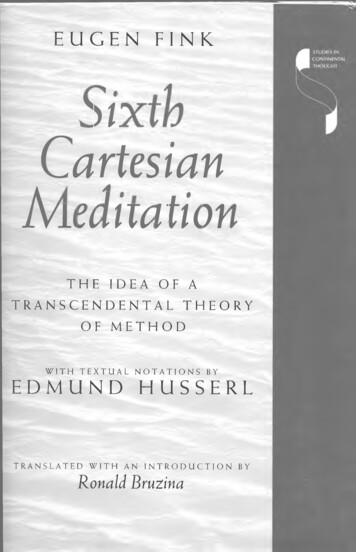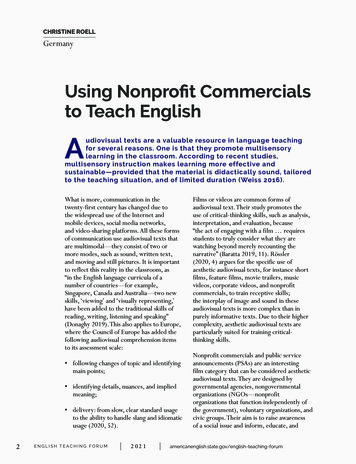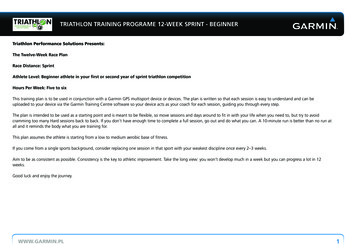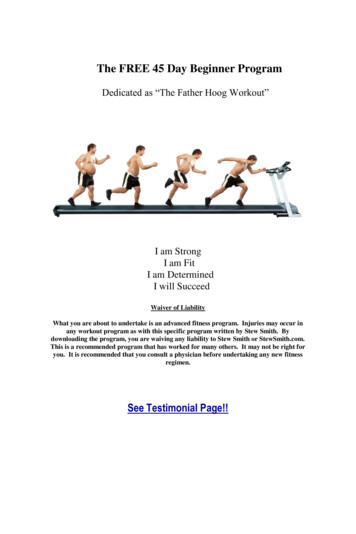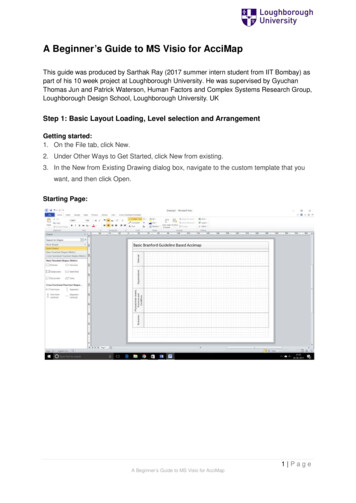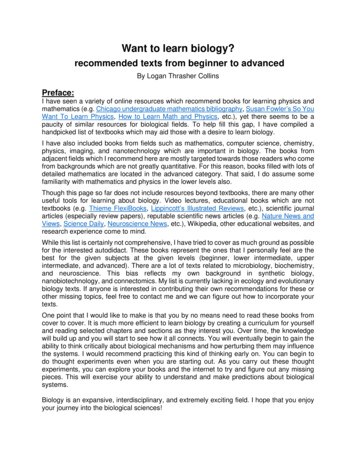
Transcription
Want to learn biology?recommended texts from beginner to advancedBy Logan Thrasher CollinsPreface:I have seen a variety of online resources which recommend books for learning physics andmathematics (e.g. Chicago undergraduate mathematics bibliography, Susan Fowler’s So YouWant To Learn Physics, How to Learn Math and Physics, etc.), yet there seems to be apaucity of similar resources for biological fields. To help fill this gap, I have compiled ahandpicked list of textbooks which may aid those with a desire to learn biology.I have also included books from fields such as mathematics, computer science, chemistry,physics, imaging, and nanotechnology which are important in biology. The books fromadjacent fields which I recommend here are mostly targeted towards those readers who comefrom backgrounds which are not greatly quantitative. For this reason, books filled with lots ofdetailed mathematics are located in the advanced category. That said, I do assume somefamiliarity with mathematics and physics in the lower levels also.Though this page so far does not include resources beyond textbooks, there are many otheruseful tools for learning about biology. Video lectures, educational books which are nottextbooks (e.g. Thieme FlexiBooks, Lippincott’s Illustrated Reviews, etc.), scientific journalarticles (especially review papers), reputable scientific news articles (e.g. Nature News andViews, Science Daily, Neuroscience News, etc.), Wikipedia, other educational websites, andresearch experience come to mind.While this list is certainly not comprehensive, I have tried to cover as much ground as possiblefor the interested autodidact. These books represent the ones that I personally feel are thebest for the given subjects at the given levels (beginner, lower intermediate, upperintermediate, and advanced). There are a lot of texts related to microbiology, biochemistry,and neuroscience. This bias reflects my own background in synthetic biology,nanobiotechnology, and connectomics. My list is currently lacking in ecology and evolutionarybiology texts. If anyone is interested in contributing their own recommendations for these orother missing topics, feel free to contact me and we can figure out how to incorporate yourtexts.One point that I would like to make is that you by no means need to read these books fromcover to cover. It is much more efficient to learn biology by creating a curriculum for yourselfand reading selected chapters and sections as they interest you. Over time, the knowledgewill build up and you will start to see how it all connects. You will eventually begin to gain theability to think critically about biological mechanisms and how perturbing them may influencethe systems. I would recommend practicing this kind of thinking early on. You can begin todo thought experiments even when you are starting out. As you carry out these thoughtexperiments, you can explore your books and the internet to try and figure out any missingpieces. This will exercise your ability to understand and make predictions about biologicalsystems.Biology is an expansive, interdisciplinary, and extremely exciting field. I hope that you enjoyyour journey into the biological sciences!
Beginner:These represent foundational texts which introduce biology and associated fields which areessential for understanding biology (i.e. chemistry, physics, and mathematics). They are at ahigh school or maybe college freshman level.BiologyCampbell Biology – by Urry, Cain, Wasserman, Minorsky, Reece Anauthoritative introduction to biology and its subdisciplines. It features clearexplanations, good organization, and helpful illustrations. Though lengthy, youcan often read desired subsections in any order. That said, I would recommendreading some molecular biology and genetics chapters before diving intophysiology. It should be noted that this text is a primary source for the highschool Biology Olympiad competition.ChemistryChemistry – by Zumdahl, Zumdahl, and DeCoste An introductory chemistrytext which has good organization and illustrations. Though other generalchemistry books could work just as well, I have a mild personal preference forthis one.MathematicsCalculus – by Stewart Though lengthy, this book is a good introduction tocalculus. It explains single-variable calculus and multivariable calculus and evengives a small taste of differential equations. This is excellent since calculus anddifferential equations are so central to computational modeling of biologicalsystems.PhysicsPhysics for Scientists and Engineers: A Strategic Approach with ModernPhysics – by Knight While I have not used this book personally, I have heardgood things with regards to its applicability for biology. As such, I picked outKnight’s text for this list entry because of its organization, its inclusion of modernphysics, and its emphasis on practical applications.Lower intermediate:These books introduce a range of key subfields in biology. Though some of the texts are quitelong (e.g. 800 pages), I will say again that they do not need to be read cover to cover. Thesedo not require greatly specialized knowledge to understand. They are typically used for firstyear or second year university courses. As with the previous section, I have included somenon-biology texts covering fields adjacent to biology. Note that, because biology is aninterdisciplinary enterprise, these adjacent fields are vitally important for understanding andapplying biological knowledge.Biochemistry
Lehninger’s Biochemistry – by Nelson and Cox Great textbook whichdiscusses biochemistry with both depth and breadth. It is not as detailed asVoet’s book (see the upper intermediate section), but it is not a light treatmenteither. This text features beautiful illustrations which are very helpful forgaining a deeply visual appreciation of how biochemistry works. In my opinion,it also has well-written treatments of the mathematics of enzyme kinetics andrelated topics.Computer scienceMATLAB: A Practical Introduction to Programming and ProblemSolving – by Attaway Since computer science is an integral part of biologyresearch, it is important to have at least some understanding of programmingand modeling. For those who are not already familiar with programming,Attaway’s MATLAB book provides an excellent entry point. It instructs on howto use MATLAB in a clear and concise way and also discusses essentialmathematics that come up in scientific computing. Another strength of thistext is its clean organization, which allows one to jump around the different sections moreeasily as required by one’s explorations in MATLAB coding. MATLAB is one of the most userfriendly programming languages and so it is great for beginners. Though MATLAB is not asgrounded in the fundamentals of computational logic as some languages, it is quite useful asa tool for many scientific computing applications such as modeling, image processing, anddata analysis. It should be noted that MATLAB itself is not free, though if you are affiliatedwith a university, the school will probably pay for your license.Python Programming: An Introduction to Computer Science – by Zelle This text provides another excellent entry point into programming. Zelleacts as a well-organized reference for learning the basics of Python. It is clearand reasonably concise. By contrast to MATLAB, Python is freely available.Another benefit of Python is the wide array of user-created softwarepackages that you can easily install into your Python infrastructure. Many ofthese packages provide tools that handle specific areas of computationalbiology such as nucleic acid sequence analysis or biologically realistic neuronsimulation.GeneticsEssentials of Genetics – by Klug, Cummings, Spencer, Palladino, Killian A standard text which introduces the various branches of genetics. Thoughthere is perhaps not enough focus on modern techniques for my personaltaste, I do appreciate the clarity of this book’s molecular genetics sections.Gene Cloning and DNA Analysis: An Introduction – by Brown Excellentbook which describes molecular genetics techniques. It is concise and clearand yet still covers a lot of important methods in sufficient detail to conveyreal understanding.
ImmunologyCellular and Molecular Immunology – by Abbas, Lichtman, Pillai Explainsimmunological principles in a through yet digestible way. It features veryconsistent diagrams which carefully represent specific molecules and cell typeswith the same images throughout the book.Basic Immunology: Functions and Disorders of the Immune System – byAbbas, Lichtman, Pillai This text is essentially a more concise version ofCellular and Molecular Immunology. Since it is written by the same authors, italso features its sister text’s helpfully consistent diagrams.MathematicsFundamentals of Differential Equations and Boundary Value Problems –by Nagle, Saff, and Snider Differential equations are vitally important formodeling and simulation in biology, so if you want to go into any kind ofbiotechnology-related field, you should learn about this branch of mathematics.This text covers differential equations in a clear manner, provides lots of goodexercises, and focuses on application rather than theory.Linear Algebra: Step by Step – by Kuldeep Singh Linear algebra is anotherarea of mathematics which is vitally important for modeling and simulation inbiology and bioengineering fields. This book goes over linear algebra in a clearfashion, has some illustrations to aid intuitive understanding, includes manygood exercises, and emphasizes application rather than theory.MicrobiologyBrock Biology of Microorganisms – by Madigan, Bender, Buckley, Sattley,Stahl For those who want to explore infectious disease and/or syntheticbiology, it can be valuable to get acquainted with microbiology. This authoritativetext is friendly to beginners in biology and has strong illustrations.Molecular and Cellular Biology of Viruses – by Lostroh This is a goodbook for virology in general. It has very pretty illustrations which are quite helpfulto the reader. I do think that the book meanders too much in its explanations.The organization of the book as a whole seems a little haphazard as well.Nonetheless, this text can serve as a good reference if you want to read up ona specific type of virus and are looking for intuitive comprehension of itsmechanisms.Molecular biologyMolecular Biology of the Cell – by Alberts, Johnson, Lewis, Raff, Roberts,Walter A comprehensive and yet approachable book on molecular biology. Ithas numerous excellent illustrations, a crucial feature in any molecular biologytext. It thoroughly covers a large array of important topics. There are evensupplemental digital chapters on further topics in molecular biology forinterested readers.
Essential Cell Biology – by Alberts, Hopkin, Johnson, Morgan, Raff,Roberts, Walter Though this book is somewhat less detailed and thoroughthan the Molecular Biology of the Cell, it provides a more concise introductionto cell biology, while still covering enough detail to grant a good understandingof the subject. It also has great illustrations.NeuroscienceNeuroscience: Exploring the Brain – by Bear, Connors, Paradiso This book talks abouta wide range of topics in neurobiology, so it is useful for introducingneuroscience as a broad field of study. I found the chapters on sensoryneuroscience to be especially strong. In my admittedly biased opinion, thebook neglects computational neuroscience and modern neuroscientifictechniques. If you are coming from a highly mathematical background and/orwanting to go into a mathematically-focused field of neuroscience, you mightwant to supplement this text with some computational neuroscience books(see the intermediate and advanced sections of this page).Organic chemistryOrganic Chemistry as a Second Language: First Semester Topics – byKlein Klein’s short books on organic chemistry are amazing at helping thereader to understand the core principles of the subject. The first semestertopics text is especially good for explaining the principles governing structureand mechanisms in organic chemistry.Organic Chemistry as a Second Language: Second Semester Topics –by Klein The second installment in Klein’s short texts on organic chemistryis similarly fantastic for gaining intuitive understanding. It goes into more depthon why certain reaction mechanisms happen as well as coveringspectroscopy topics.Organic Chemistry – by Klein Klein’s full-length textbook provides furtherdetail on organic chemistry while still emphasizing skills and principles ratherthan memorization.PhysiologyPrinciples of Anatomy and Physiology – by Tortora and Derrickson Very long book,but wonderfully illustrated, clearly explained, and highly informative. I really appreciate howthis text discusses molecular biology and biochemistry in the context ofhuman physiology. It includes a wealth of fascinating details on howphysiology works from the molecular level on up to the whole body. Iespecially enjoyed the chapter on endocrinology. For those who aremedically inclined, there is also a lot of detail on the anatomical terminology(but this can easily be skimmed if you are not planning on going intomedicine). Finally, there are numerous boxes which discuss specificdiseases and other clinical subjects of special interest.Plant biology
Raven Biology of Plants – by Evert and Eichhorn An authoritative texton plant biology. Though I never got into this book much, I have heard greatreviews from others. It covers a wide range of topics in botany and offers clearexplanations as well as very nice illustrations and photographs. It spends alot of time reviewing content from other areas of biology, which can be goodor bad depending on your level of background.Upper intermediate:Books which cover more specialized topics in various subfields of biology or cover broaderfields of biology in more depth. In contrast to the previous texts, these books tend to go intomore detail and assume that the reader has more background. They are often employed inupper-level undergraduate elective courses. It should be noted that the degree of backgroundrequired for my “lower intermediate” and “upper intermediate” categories is a matter ofopinion. People may find certain texts more challenging or less challenging depending ontheir background and learning style. That said, I think that these categories can still serve asa rough guide for those seeking to expand their knowledge of the biological sciences.BiochemistryIntroduction to Proteins: Structure, Function, and Motion – by Kesseland Ben-Tal Discusses protein biochemistry and biophysics. This textdoes not go into great mathematical detail (it only includes relatively simpleequations), but it does discuss the conceptual underpinnings of biophysicalphenomena in a lot of detail. As an example, it contains some excellentbiophysical explanations of why protein folding is such a challengingcomputational problem. The book also provides a wealth of information abouthow proteins operate in the larger cellular and physiological contexts. Theillustrations are only moderately attractive, but still helpful from a practicalperspective.Biochemistry – by Voet and Voet Though I have not personally used thisbook much, I have heard it is an excellent text from a number of sources, soI wanted to include it here. Voet’s textbook is known for going into a lot ofdetail, so it should serve you well if you are looking for a comprehensivediscussion of general biochemistry. It also has very good illustrations.An Introduction to Medicinal Chemistry – by Patrick Beautiful book ondrug design, drug development, and how drugs interact with the body. Thistextbook is really great because it clearly explains the fundamental principlesof medicinal chemistry in a highly generalizable fashion. Its writing anddiagrams really help the reader to understand the “why” underlyingpharmacology. The text is also quite concise, direct, and practical in itspresentation.Developmental biologyDevelopmental Biology – by Gilbert and Barresi This book containsimpressive details on the development of various organisms. It has beautifuldiagrams and describes complicated signaling pathways in an engaging andmeaningful manner. When I read Gilbert’s text, I get excited about how the
process of organismal development follows a gorgeously complex extrapolation offundamental chemical logic.ImagingFluorescence Microscopy: From Principles to Biological Applications– edited by Ulrich Kubitscheck An excellent introduction to theengineering principles of fluorescence microscopy. This book providesbackground on optical physics, explains the physical mechanisms behindkey types of modern fluorescence microscopy systems (e.g. confocalmicroscopy, light-sheet microscopy, etc.), and discusses how fluorescenceitself works and is applied. While the text does not shy away from using thenecessary mathematical tools to properly explain the subject, it is clearenough that even readers with relatively light backgrounds in physics shouldfind it reasonably understandable.Introduction to Medical Imaging: Physics, Engineering and ClinicalApplications – by Barrie Smith and Webb Clear and well-organizedintroduction to the main modalities of medical imaging. This text explainsphysical principles behind the operation of technologies such as magneticresonance imaging, x-ray computed tomography, ultrasound, and more. Italso discusses some important concepts in computational imageprocessing. While mathematics certainly plays a key role in this book, it isoverall fairly light on quantitative aspects. Depending on your goals, this canbe advantageous or a drawback. The illustrations are helpful from a practicalperspective, though not especially lush.MicrobiologyBacterial Pathogenesis: A Molecular Approach – by Wilson, Winkler,Ho Really nice book on the molecular mechanisms of bacterialpathogenesis. This book has a fair amount of detail on the subject butexplains clearly. I own the 3rd edition rather than the more recent 4th edition,but I have had a chance to look through the 4th edition. It should be notedthat the 4th edition has major updates including beautiful full-color illustrationswhich greatly enhance its explanatory power. The 3rd edition already hadquite helpful diagrams, but the 4th edition appears to have taken this to a newlevel entirely.Virology: Principles and Applications – by Carter and Saunders Thisvirology text is less comprehensive than many other virology books, but itmakes up for this in that it explains viruses in a highly concise and pragmaticmanner. The sections on bacteriophages and HIV are especially strong. Forthe reader who seeks to gain clear and direct understanding of the keymolecular mechanisms used by viruses, this text is excellent.Principles of Virology – by Flint, Racaniello, Rall, Skalka, Enquist Thisbook comes in two volumes. The first emphasizes molecular biology ofviruses and the second emphasizes the pathogenesis and control of viruses.The diagrams are quite consistent, beautiful, and helpful. The text explainsclearly and covers a lot of valuable topics. As a result of its thoroughness, this
book may seem somewhat overwhelming, but it still is excellent as a reference and as ageneral source of virology knowledge.Molecular biology and geneticsMolecular Biology of the Gene – by Watson, Baker, Bell, Gann, Levine,Losick Classic text which discusses molecular genetics at a somewhathigher level than a typical introductory molecular biology book. Greatillustrations and clear explanations aid the reader’s understanding of theintricate molecular machines which tirelessly carry out the myriad of tasksnecessary to run the genome and transcriptome. The book is fairly long, butif you already know some molecular biology, you can certainly jump aroundto learn more details about specific areas of interest.Molecular Genetics of Bacteria – by Snyder, Peters, Henkin, Champness Similar to Watson’s text (above), but specifically covering bacterialmolecular genetics rather than molecular genetics in general. In the 4thedition, the illustrations convey strong understanding of molecularmechanisms, though they are not as sumptuous as the diagrams in somebiology books. In the 5th edition, the illustrations are both sumptuous andconvey strong understanding of molecular mechanisms. There is a lot of greatmaterial here which can be especially useful for biohackers (and otherresearchers) who want to use the bacterial cell as a chassis for syntheticbiology.NeuroscienceCognition, Brain, and Consciousness: Introduction to CognitiveNeuroscience – by Baars and Gage Discusses cognitive neurosciencefrom both neuropsychological and neurophysiological perspectives. This textgoes over a lot of psychological experiments for those who are interested inbehavioral neuroscience, but also discusses mechanisms for those who wantto focus more on the underlying ways that the brain operates. In my opinion,the largest drawback of this book is that it is weak on cellular neurophysiology.Fundamentals of Computational Neuroscience – by Trappenberg Anexcellent introduction to computational neuroscience for someone coming intothe area from a less quantitatively-focused background. You will still need toknow calculus and maybe a small amount of differential equations, but thebook is less mathematically intense than most other computationalneuroscience texts. Furthermore, the book explains key ideas from areas ofmathematics such as linear algebra and probability so that the reader doesnot necessarily have to already know these subjects. It is fairly concise yet stillclearly explains a wide variety of topics from the field.Physical chemistryMolecular Driving Forces: Statistical Thermodynamics in Biology, Chemistry, Physics,and Nanoscience – by Dill and Bromberg This book features elegant explanations ofhow statistical thermodynamics and molecular physics apply to biology and nanotechnology.In my opinion, one of its strengths is its excellent organization. The text also features very
clean formatting which makes it a smoother read. Though this text ismathematics-focused, it reviews key concepts in probability and multivariablecalculus for readers who have less quantitative backgrounds. There are somegreat chapters on foundational topics (e.g. entropy, the Boltzmann distribution,electrostatics, etc.) as well as numerous chapters on exciting applications suchas polymer physics, biochemical machines and nanomachines, andcooperative binding.PhysiologyThe Biology of Cancer – by Weinberg This book provides an amazingintroduction to the molecular biology, genetics, biochemistry, and treatment ofcancer. Lots of great content on tumor pathogenesis from perspectives of cellsignaling, DNA repair and recombination, tissue microenvironment,immunobiological aspects, virology, and more. The book features a wealth ofbreathtaking diagrams and histological photographs which are colorful,detailed, and highly informative. Though some of the book goes through a lotof basic molecular biology review, readers who feel comfortable with thatmaterial can easily skip to more advanced sections.Advanced:Books that cover specialized topics in depth and books that involve somewhat complicatedmathematics are listed here. These texts typically assume that you have a fair amount ofbackground. They are usually employed at the senior undergraduate level or at the graduatelevel (but please do not let this discourage you from trying them out regardless). Note that afew of these might be called monographs rather than textbooks. Because of the breadth ofthe biological sciences, there are many thousands of possible titles to include in this section,so please realize that these texts represent a small sampling.BiochemistryProtein Actions: Principles and Modeling – by Bahar, Jernigan, Dill Excellent text on the biophysics of proteins. This book goes through a lot ofchallenging content on physical chemistry and computational modeling, yet itis presented in a very understandable way. Full color illustrations, clearlyorganized equations, and elegant explanations contribute to its pedagogicalstrength.GeneticsEpigenetics – by Allis, Caparros, Jenuwein, Reinberg Very detailed butalso very rewarding, this book goes over epigenetics in a series of engagingchapters written by expert authors. Despite having different authors fordifferent chapters, the book uses consistent illustrations throughout. Theillustrations are also of high quality and are in full color, which helps tomotivate the reader and aids understanding. This text covers the epigeneticsof a series of model organisms as well as a myriad of key topics inmammalian epigenetic research.
Mobile DNA III – edited by Craig, Chandler, Gellert, Lambowitz, Rice,Sandmeyer Very long and highly technical, this monograph delves deepinto research on topics such as transposons, recombination, andprogrammed DNA rearrangements. Despite its technical character, this bookstill includes a myriad of helpful (and colorful) diagrams and usually has goodexplanations. I especially enjoyed the chapter on integrons.ImagingFundamentals of Biomedical Optics A good text on microscopy and otherforms of imaging as well as the underlying optical physics involved in theengineering of imaging systems. The book is well-organized, engaginglyillustrated, detailed, and emphasizes generalizable principles. Many parts ofthis text can be a struggle for a reader without a strong physics background,but this makes sense given the subject matter and level of depth.NanotechnologyBioconjugate Techniques – by Hermanson A great reference text forthose interested in nanobiotechnology, drug delivery, contrast agents, andother areas involving bioconjugates. This book is filled with beautiful diagramswhich aid understanding. The explanations are a less concise than would beideal, though they are still effective. The text also provides lots of clearlaboratory protocols for interested researchers.The Nature of the Mechanical Bond: From Molecules to Machines – byBruns and Stoddart Beautiful and comprehensive text on supramolecularchemistry, an area which is highly relevant to bioengineering disciplines. Itfocuses on the synthesis and dynamics of supramolecular structures whichperform desired mechanical actions. The book is somewhat long due to itshigh level of detail and coverage, but it is gorgeously illustrated and wellwritten. There is a fair amount of historical content included throughout andthe first chapter discusses some connections between supramolecular chemistry and art. Iwould recommend having a strong understanding of your chemical thermodynamics,chemical kinetics, organic chemistry, and perhaps even some organometallic chemistry whenreading this book. While this kind of background knowledge is not absolutely necessary, itcan certainly help to get more out of the text.NeuroscienceDendrites – edited by Stuart, Spruston, Häusser Beautiful text whichgoes through the biology of dendrites in a series of engaging chapters byexpert authors. Exceptionally well-made diagrams (with full color also) helpthe reader to understand concepts and useful tables facilitate referencing ofdetailed information. One drawback of the book is that it is lacking in concision,though this is partly due to the need to discuss ambiguity in content at thefrontiers of dendrite research.Handbook of Brain Microcircuits – edited by Shepherd and Grillner Thisbookprovides a series of short reviews on the mechanistic workings of neuronal microcircuits inboth vertebrate and invertebrate systems. Though brief, each chapter packs in a lot of
interesting information. As with many of the texts I have chosen for this list, thetext features many full color diagrams to aid the reader. If you want to see amyriad of examples of the precise mechanisms which produce cognition andbehavior, this book is excellent. Of course, the book is far from comprehensive;there are many papers which examine other neural circuits and there remainsa vast universe of neural circuits still waiting to be uncovered.Neuronal Dynamics: From single neurons to networks and models ofcognition – by Gerstner, Kistler, Naud, Paninski An elegantly-writtencomputational neuroscience book which has been made freely available bythe authors online. Lots of mathematical modeling is discussed in this text,but it explains the mathematics clearly and does not muddle understandingthrough unnecessary digressions. Note that this book focuses much more onthe mathematical models than on actual coding (depending on your goals,you may find this beneficial or detrimental). This textbook is great forfacilitating deeper understanding of computational neuroscience.Fundamentals of Brain Network Analysis – by Fornito, Zalesky,Bullmore An excellent text on using graph theory in neuroscience. It isbeautifully illustrated, well-organized, and clearly explained. Themathematical tools of graph theory and complex networks are madeaccessible to those coming from a biological background. My only complaintabout this book is that it is somewhat lacking in conciseness. My personalview is that it would have been possible to explain the subject more conciselywithout losing out on the depth and other beneficial qualities. Nonetheless,the book can be very rewarding (and enjoyable).
Molecular biology Molecular Biology of the Cell – by Alberts, Johnson, Lewis, Raff, Roberts, Walter A comprehensive and yet approachable book on molecular biology. It has numerous excellent illustrations, a crucial feature in any molecular biology text. It thoroughly
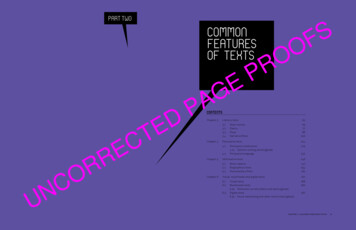
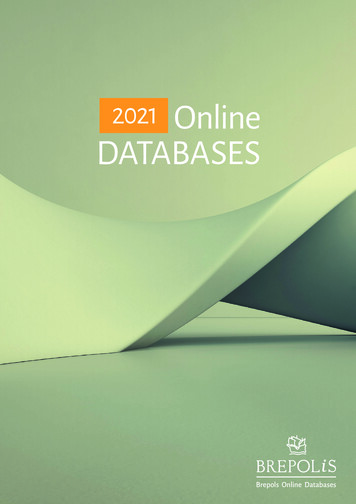

![The Book of the Damned, by Charles Fort, [1919], at sacred .](/img/24/book-of-the-damned.jpg)
